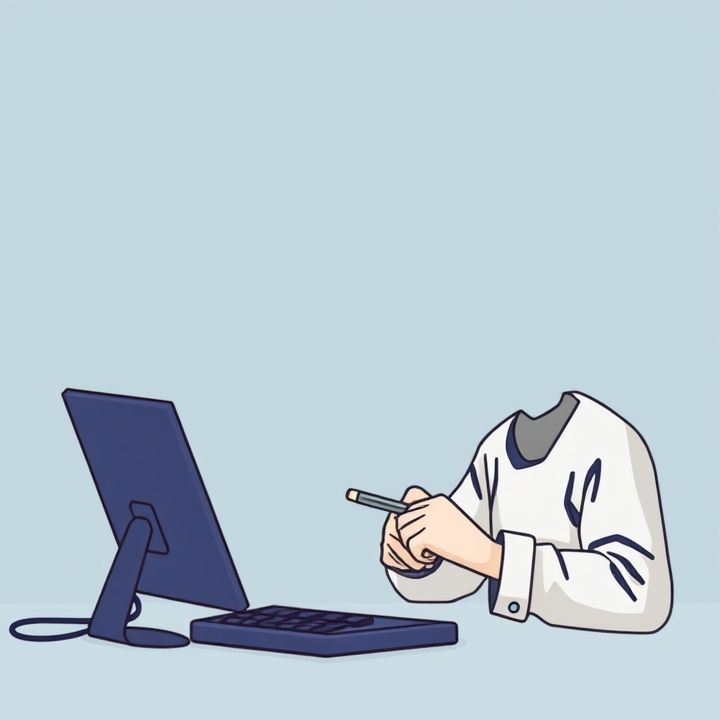Table of Contents
- Introduction
- Identifying Key Segmentation Criteria
- Utilizing Data Analytics for Accurate Segmentation
- Creating Detailed User Personas
- Designing Tailored Promotions for Each Segment
- Using A/B Testing to Optimize Offers
- Integrating User Segmentation with Automation Tools
- Tracking and Analyzing Performance Metrics
- Adjusting Strategies Based on Feedback and Data
- Conclusion
- Frequently Asked Questions
Introduction
In the bustling world of digital marketing, the key to skyrocketing sales lies in mastering the art of precision. Imagine the power of delivering promotions so laser-focused that they speak directly to the unique needs of each individual customer. Welcome to the transformative strategy of user segmentation—your golden ticket to converting potential leads into loyal clients.
In this article, we will dive deep into the ocean of consumer data to uncover insightful patterns and segment users into meaningful categories. By understanding your audience on a granular level, you can craft tailored promotions that resonate on a personal level, leading to significantly increased engagement and conversion rates. Get ready to unlock the secret of effective marketing and see your sales charts soar to unprecedented heights!
To further illustrate the impact of user segmentation, consider this simple table showcasing the benefits:
| Traditional Marketing | User Segmentation |
|---|---|
| Generic Ads | Targeted Promotions |
| Low Engagement | Higher Engagement |
| High Bounce Rates | Lower Bounce Rates |
Identifying Key Segmentation Criteria
To effectively leverage user segmentation for targeted promotions, identifying key segmentation criteria is essential. This involves analyzing various characteristics and behaviors to tailor marketing efforts and enhance engagement. One crucial criterion is demographic data, including age, gender, income, and location, which helps in understanding the audience’s basic profile. Additionally, behavioral segmentation plays a pivotal role by examining user interactions, purchasing behavior, and usage patterns. This data offers insights into consumers’ interests and needs, allowing businesses to target users with relevant offers.
Psychographic factors, such as values, lifestyle, and personality traits, further refine segmentation by understanding the underlying motivations driving consumer decisions. Another significant criterion is technographic segmentation, which focuses on users’ technological preferences, including device usage and digital habits, enabling businesses to deliver offers on preferred platforms.
Lastly, firmographic criteria, useful for B2B contexts, involve segmenting based on company size, industry, or revenue, ensuring promotions align with business needs. By combining these segmentation criteria, businesses can craft more personalized and effective promotional strategies, ultimately enhancing customer satisfaction and loyalty.
Utilizing Data Analytics for Accurate Segmentation
In today’s competitive market, utilizing data analytics for user segmentation has become a key strategy for businesses aiming to deliver targeted promotions effectively. By leveraging advanced analytics tools, companies can sift through large volumes of data to identify patterns and behaviors that segment users into distinct groups with similar characteristics or preferences. This allows for the creation of highly personalized marketing strategies that can increase engagement and conversion rates.
Data analytics enable businesses to define segments based on demographics, purchase history, online behavior, and more. For instance, a company might identify a segment of users who frequently purchase a specific product category and target them with exclusive offers or tailored recommendations. Furthermore, machine learning algorithms can enhance segmentation accuracy by continuously analyzing data and adjusting segments as customer preferences evolve.
By focusing on accurate segmentation through data analytics, businesses not only increase the effectiveness of their marketing efforts but also improve customer satisfaction. When promotions are relevant, consumers are more likely to engage, resulting in stronger customer loyalty and long-term revenue growth. Therefore, investing in robust data analytics capabilities is essential for any company that wants to stay ahead in the ever-changing landscape of consumer preferences.
Creating Detailed User Personas
Creating detailed user personas is a foundational step in effectively leveraging user segmentation to deliver targeted promotions. By crafting in-depth personas, businesses can gain a deeper understanding of their audience, allowing for more personalized marketing strategies. These personas are crafted by analyzing demographic data such as age, gender, location, and education, as well as psychographic factors like interests, behaviors, and preferences. Furthermore, it is crucial to incorporate insights from user interactions, purchasing habits, and feedback that can provide a well-rounded perspective of each segment.
Once the data is collected, it is important to flesh out each persona with a name, a short biography, and even some fictional personal traits, which can help marketers think of the personas as real people. This approach encourages a more empathetic connection between the brand and its customers. By tailoring promotions and offers to their specific needs, preferences, and challenges, businesses can increase engagement rates, foster customer loyalty, and ultimately drive sales. User personas should be revisited and updated regularly to ensure they remain aligned with evolving consumer trends and behaviors, enabling a dynamic marketing strategy that resonates with the target audience over time.
Designing Tailored Promotions for Each Segment
Designing tailored promotions for each user segment is a highly effective strategy in enhancing customer engagement and increasing conversion rates. By leveraging user segmentation, businesses can identify specific needs, preferences, and behaviors of diverse customer groups. The process begins by collecting and analyzing data such as purchase history, browsing behavior, demographics, and psychographics.
Once segments are defined, it’s essential to craft promotions that resonate with each group. For instance, young professionals might be drawn to offers highlighting convenience and exclusivity, while families may respond better to promotions emphasizing value and practicality. Businesses can employ personalized messaging and select appropriate communication channels, whether it be email marketing, social media, or loyalty programs.
Testing and measuring the effectiveness of each campaign is crucial. Feedback and data analysis help refine strategies, ensuring promotions continue to cater to evolving customer needs. Maintaining flexibility to adapt and improve is key to keeping promotions relevant and impactful. With the power of targeted promotions, businesses not only enhance customer satisfaction but also fortify brand loyalty, ultimately driving sustained growth.
Using A/B Testing to Optimize Offers
A/B testing is a powerful tool for optimizing offers and promotions to ensure they resonate with your target audience. By creating two versions of an offer—Version A and Version B—businesses can test which variation performs better in terms of conversion rates, customer engagement, or sales metrics. This experimental approach allows for data-driven decisions, enabling companies to tailor their promotional strategies effectively.
When utilizing A/B testing, it is crucial to have a clear hypothesis and measurable goals. Determine what aspect of the offer you wish to test; it could be the wording, design, discount percentage, or call-to-action placement. Once you have set your parameters, randomly divide your audience into two groups, deploying Version A to one group and Version B to another.
Analyze the results by comparing the performance of both versions. Metrics such as click-through rates, conversion rates, and sales can offer insights into which offer version most effectively drove customer actions. Use this data to refine your offers, ensuring they are more appealing and successful. Thus, A/B testing not only enhances your understanding of customer preferences but also boosts the effectiveness of your promotions.
Integrating User Segmentation with Automation Tools
Integrating user segmentation with automation tools is a powerful strategy for delivering personalized promotions and offers. Automation tools allow businesses to efficiently manage and analyze vast amounts of customer data, making segmentation more precise and actionable. By leveraging these tools, businesses can automate the identification of specific user groups based on behaviors, preferences, and demographics.
Once segments are created, automation tools facilitate the delivery of targeted promotions through various channels such as email, social media, and mobile notifications. This ensures that the right message reaches the right audience at the optimal time, thereby increasing engagement and conversion rates. Furthermore, automation supports A/B testing and analytics, enabling continual refinement of strategies based on real-time performance data.
By streamlining the process from data collection to promotion deployment, integrating user segmentation with automation tools not only saves time and resources but also enhances the customer experience. This strategic approach empowers businesses to foster stronger customer relationships and drive sales growth by meeting the unique needs and desires of different customer groups effectively.
Tracking and Analyzing Performance Metrics
Tracking and analyzing performance metrics is a crucial component of leveraging user segmentation to deliver targeted promotions or offers. By monitoring these metrics, businesses can gain insights into the effectiveness of their marketing strategies and make informed decisions. Key performance indicators (KPIs) such as click-through rates, conversion rates, and customer engagement levels are essential for measuring success. These metrics allow businesses to identify which segments respond best to specific promotions and adjust their strategies accordingly.
Advanced analytics tools can help visualize data, enabling businesses to better understand user behaviors and preferences. By continuously assessing these metrics, companies can refine their segmentation, ensuring that promotional offers are both relevant and timely. It is also important to conduct A/B testing to validate the effectiveness of different promotional strategies. This approach ensures that businesses are not only reaching their intended audience but also maximizing their return on investment (ROI).
Ultimately, tracking and analyzing performance metrics empowers businesses to adapt their marketing efforts in real time, fostering a more personalized experience for users and enhancing customer satisfaction.
Adjusting Strategies Based on Feedback and Data
Adjusting strategies based on feedback and data is crucial for effectively leveraging user segmentation. By continuously monitoring the performance of your promotions or offers, you can identify which segments are responding positively and which are not. This allows you to make informed decisions about where to focus your efforts and resources.
Utilizing data analytics tools can help you gather insights into user behavior, preferences, and engagement levels. This data provides a detailed view of how each segment interacts with your promotions, enabling you to tailor and optimize your strategies accordingly.
Feedback from users is equally important. Encouraging users to share their thoughts through surveys or feedback forms can provide qualitative insights that data alone may not capture. This feedback can highlight areas for improvement and innovation, giving you a more comprehensive understanding of your audience.
Regularly revisiting and adjusting your strategies ensure that your promotional efforts remain relevant and effective. By being responsive to both quantitative data and qualitative feedback, you can refine your approach to deliver more personalized and impactful offers to each user segment. This dynamic strategy helps enhance user satisfaction and boosts overall campaign success.
Conclusion
In conclusion, harnessing the potential of user segmentation to drive sales through laser-targeted promotions is essential in today’s competitive marketplace. By meticulously identifying and analyzing segmentation criteria such as demographic, behavioral, and psychographic data, businesses can gain insights into consumer preferences and tailor their marketing strategies accordingly. The integration of advanced data analytics further allows for the refinement of these segments and helps in the creation of detailed user personas.
Designing tailored promotions that resonate with each specific segment enhances customer engagement and conversion rates. Employing techniques such as A/B testing meticulously fine-tunes these promotional strategies, ensuring their success. Furthermore, the implementation of automation tools amplifies this process, making the delivery of offers more efficient and effective. Tracking and analyzing performance metrics give businesses the agility to adjust their strategies based on real-time feedback and data.
Ultimately, the strategic use of user segmentation paves the way for a more personalized customer experience. By continuously adapting and refining promotional tactics based on direct feedback and analytical insights, businesses can foster loyalty and ensure sustained revenue growth, securing a competitive edge in the ever-evolving market landscape.


















